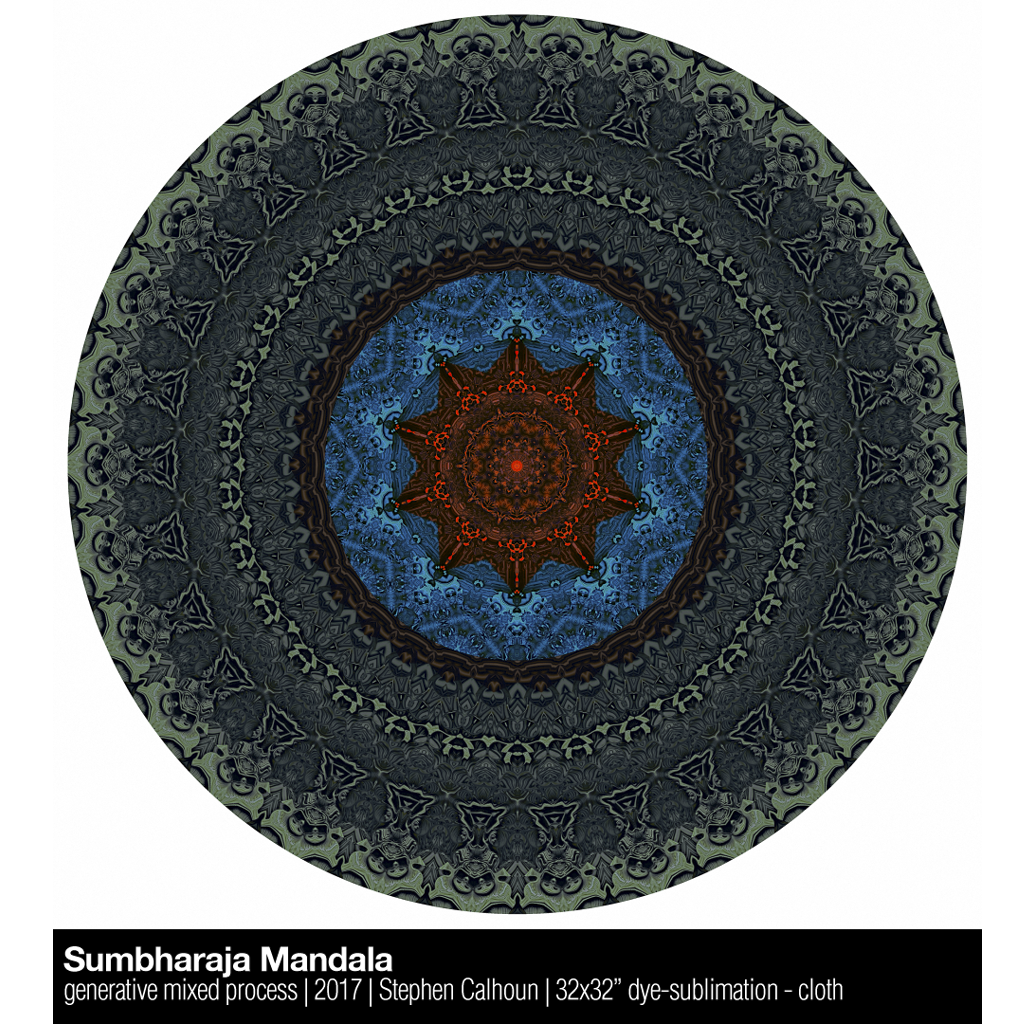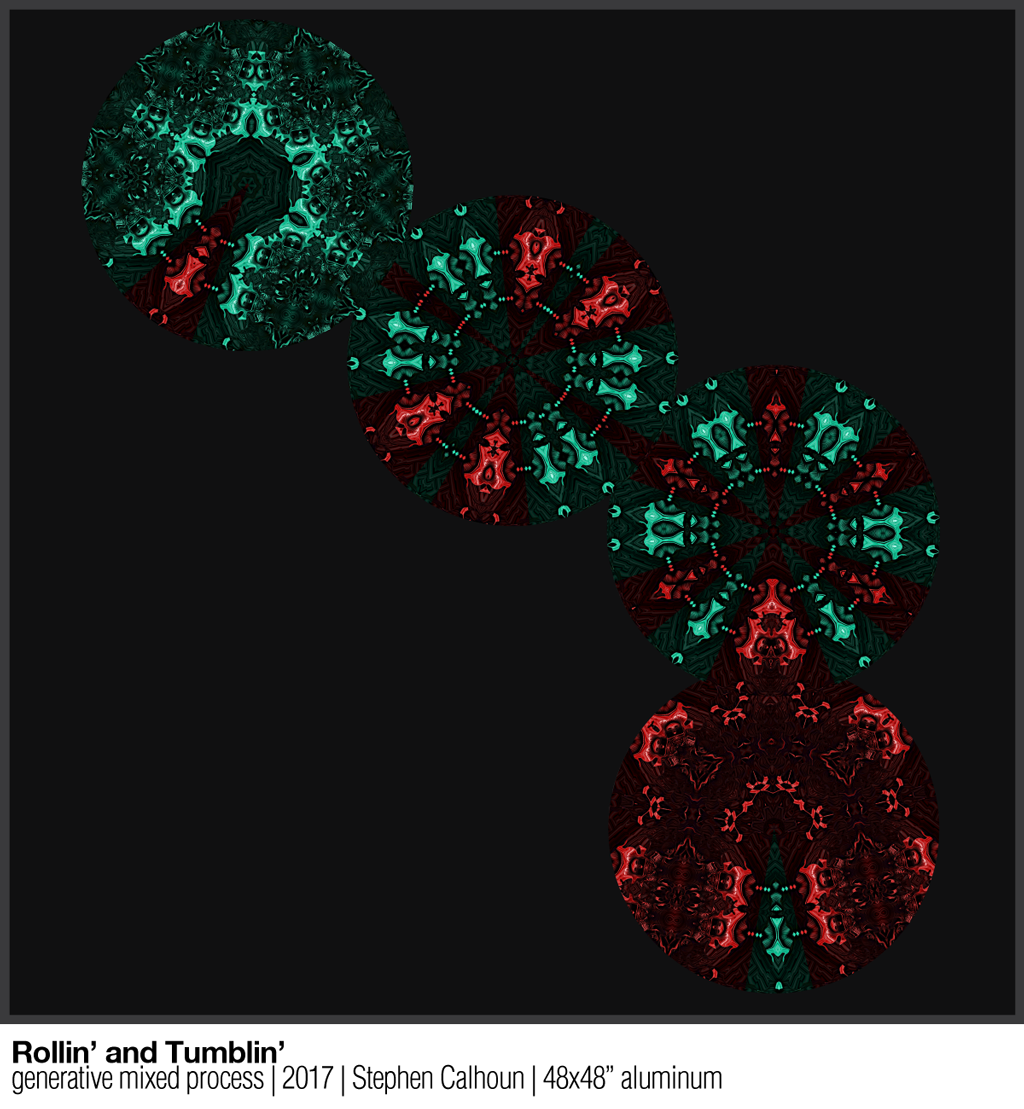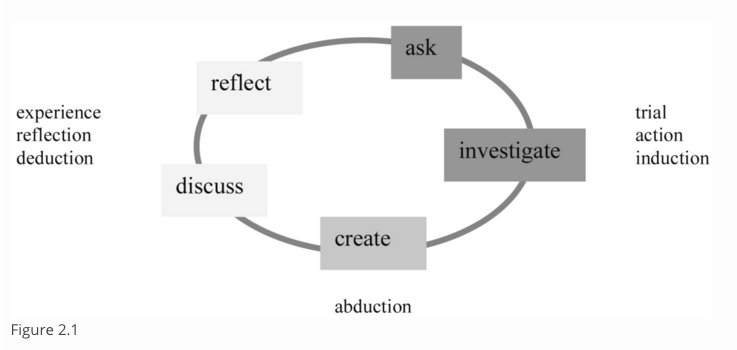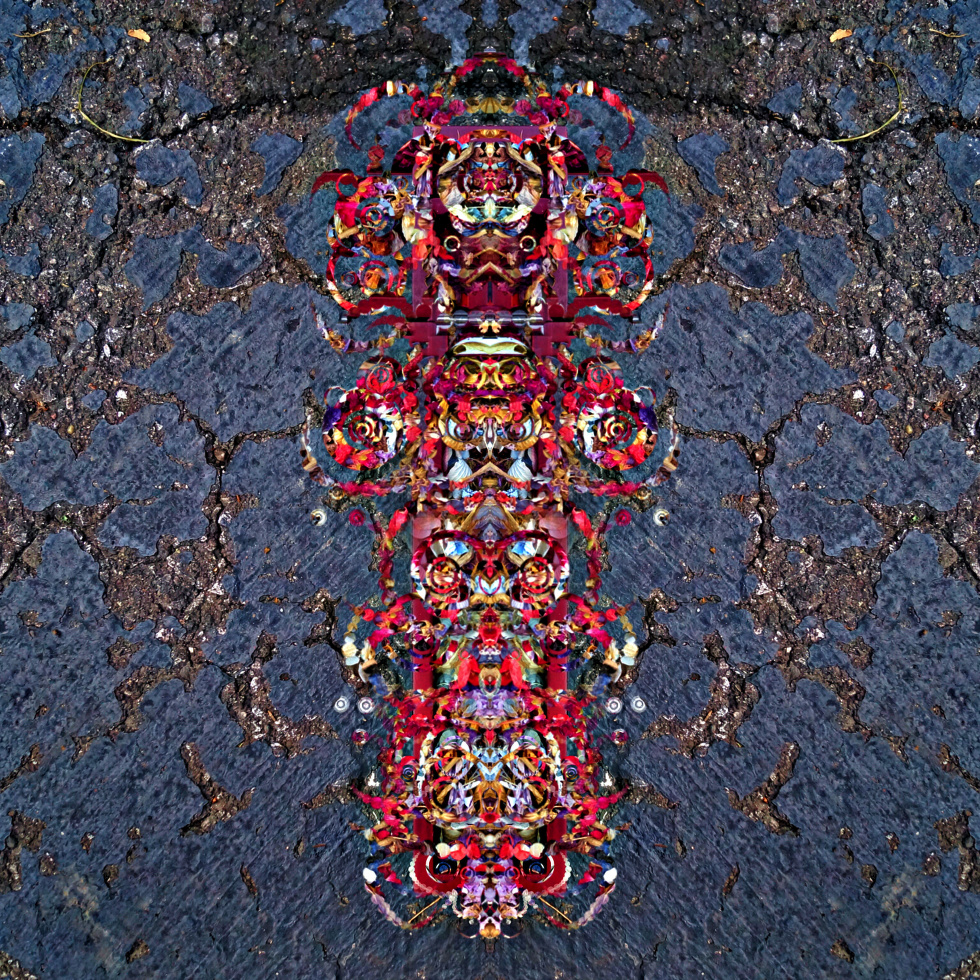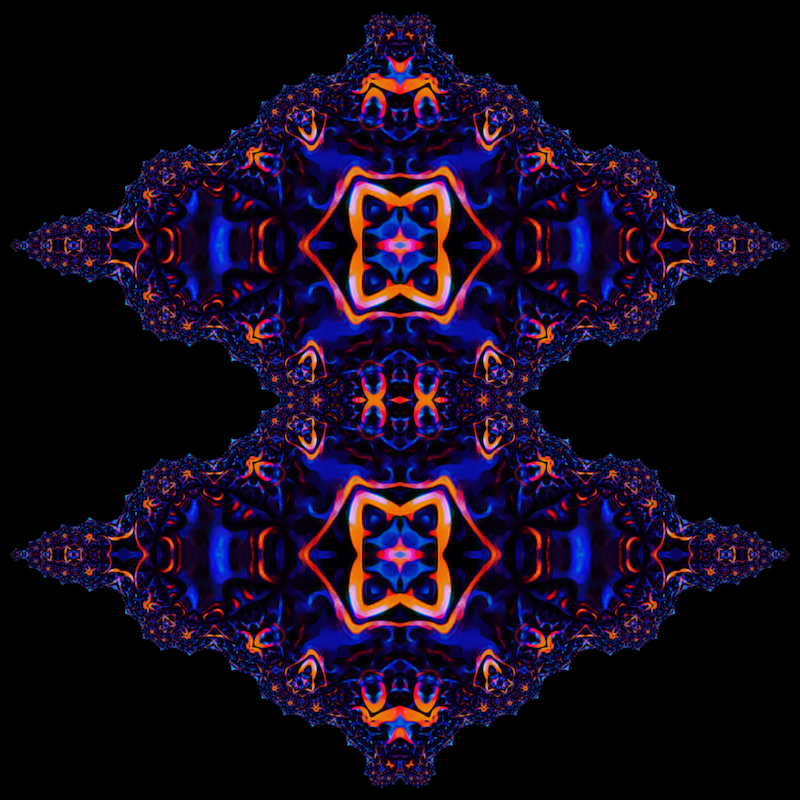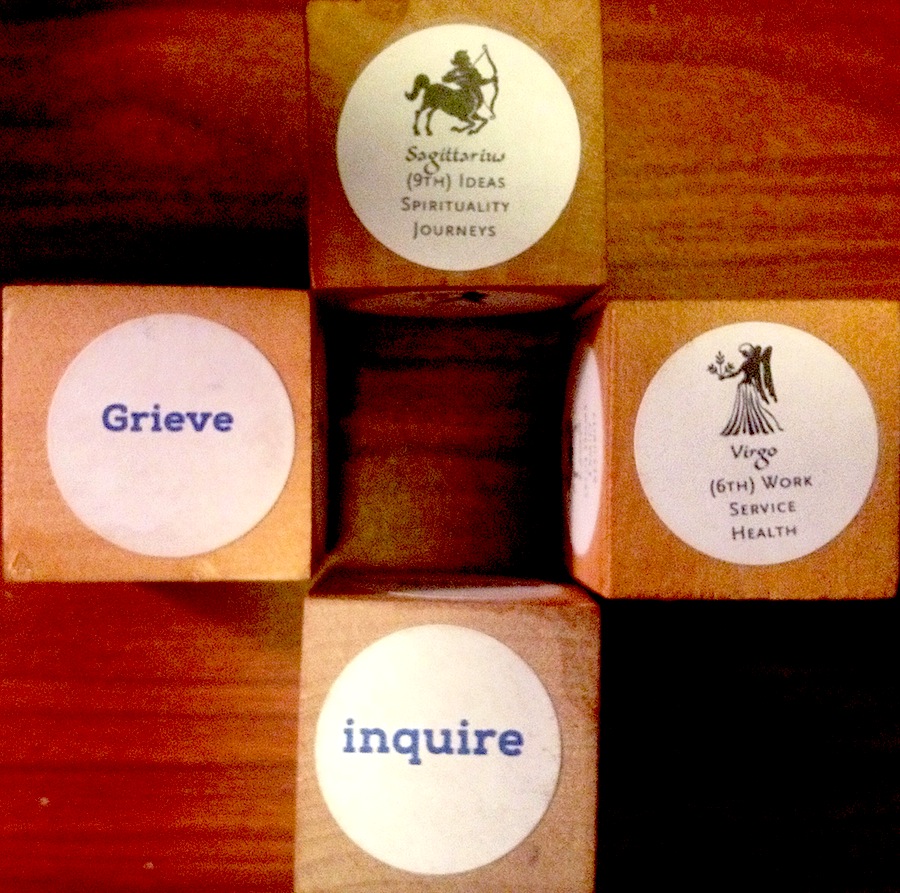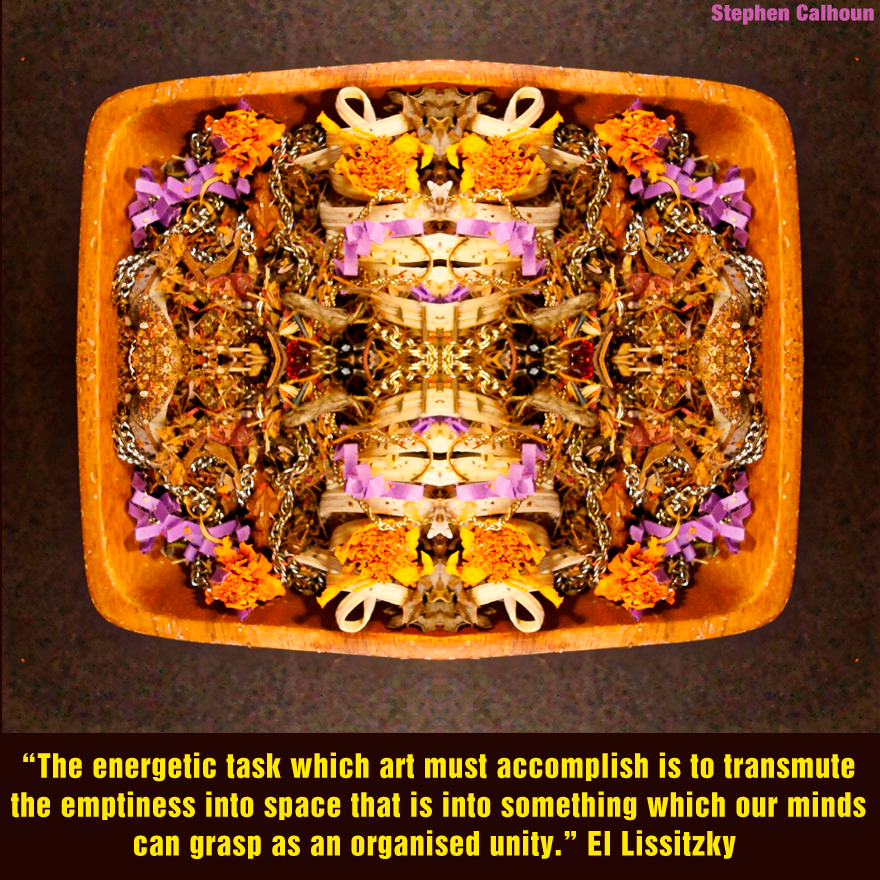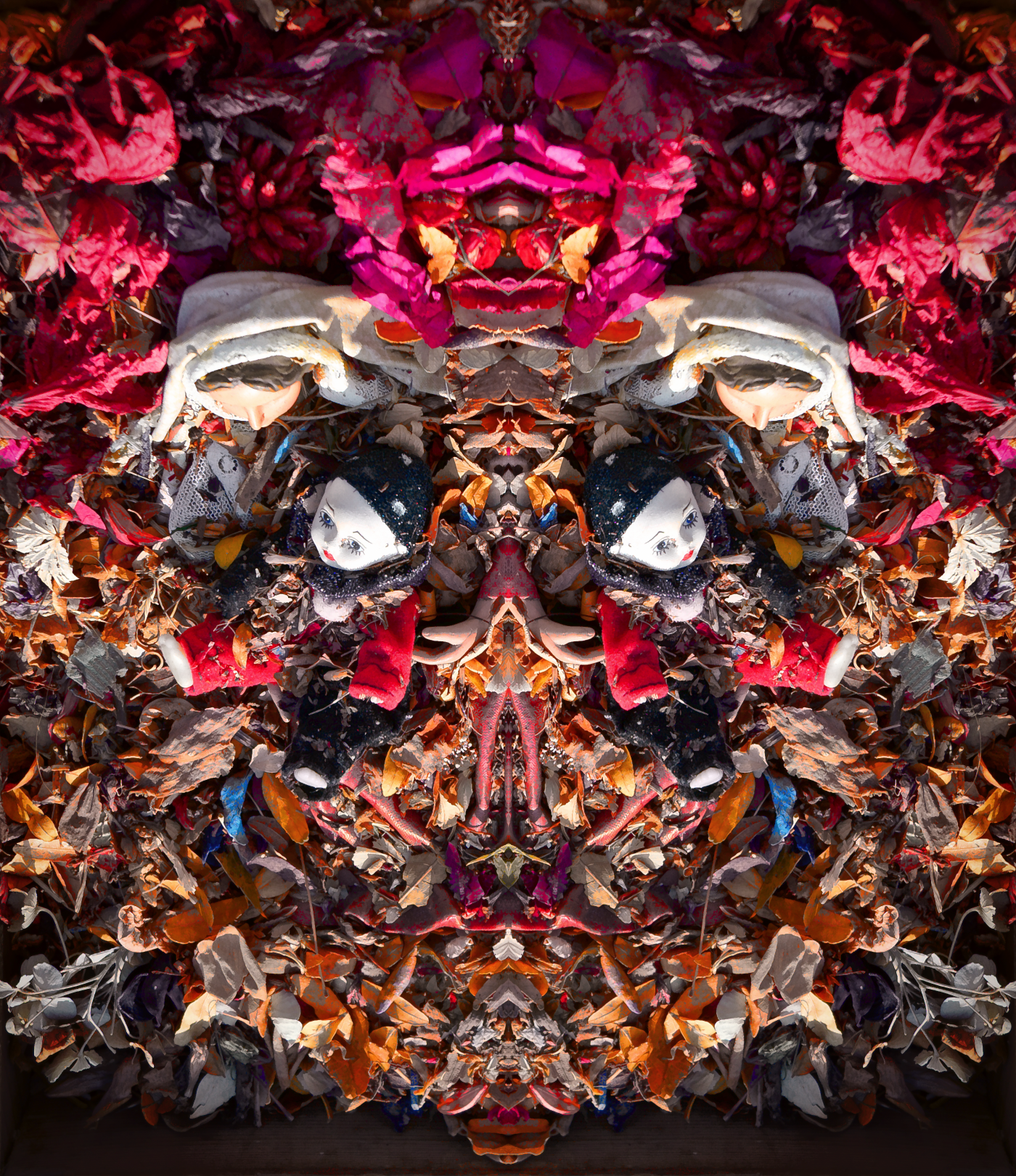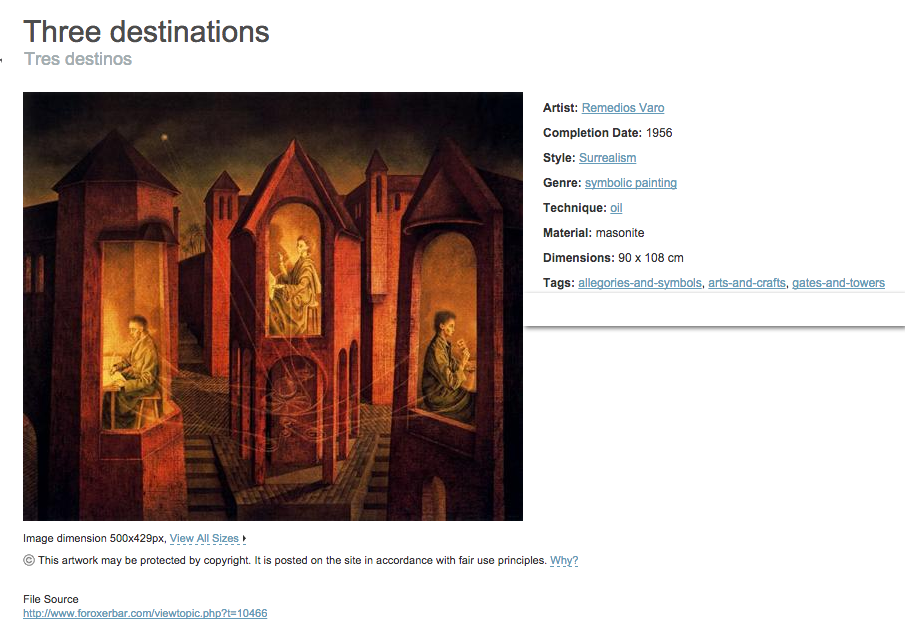Cleveland artist Gary Dumm noted that I’m engaged with infinite possibilities, and this is true enough, especially in that I allow an expansive ‘ecology’ to contribute mightily to my creative process. ‘Allow’ and ‘Contribute’ conceal aspects of process which are not under my control.
All three of these pieces use an identical Mandelbrot fractal filtered into a tessellation, or, sparked into an “interesting phenomena.”
Gregory Bateson: What has happened is that the use of a system of geometric met aphor has enormously facilitated understanding of how the mechanical trick comes to be a rule or regularity. More important, the student has been made aware of the contrast between applying a trick and understanding the necessity of truth behind the trick. And still more important, the student has, perhaps unwittingly, had the experience of the leap from talking arithmetic to talking about arithmetic. Not numbers but numbers of numbers.
Gregory Bateson: “We are searching for criteria whereby we can recognize those traits that are appropriate candidates for ongoing truth in the hurly burly of evolutionary process.”
. . .cybernetic inflection of aesthetics?
Gregory Bateson: “Interesting phenomena occur when two or more rhythmic patterns are combined, and these phenomena illustrate very aptly the enrichment of information that occurs when one description is combined with another. In the case of rhythmic patterns, the combination of two such patterns will generate a third. Therefore, it becomes possible to investigate an unfamiliar pattern by combining it with a known second pattern and inspecting the third pattern which they together generate.” both excerpts from Mind and Nature. A Sacred Unity.

